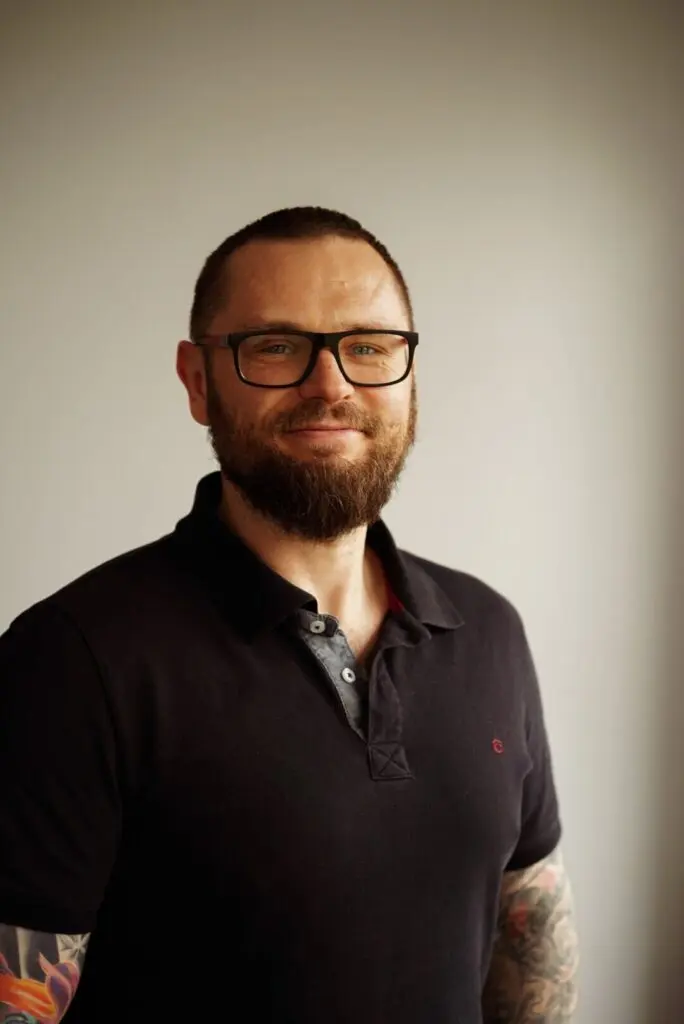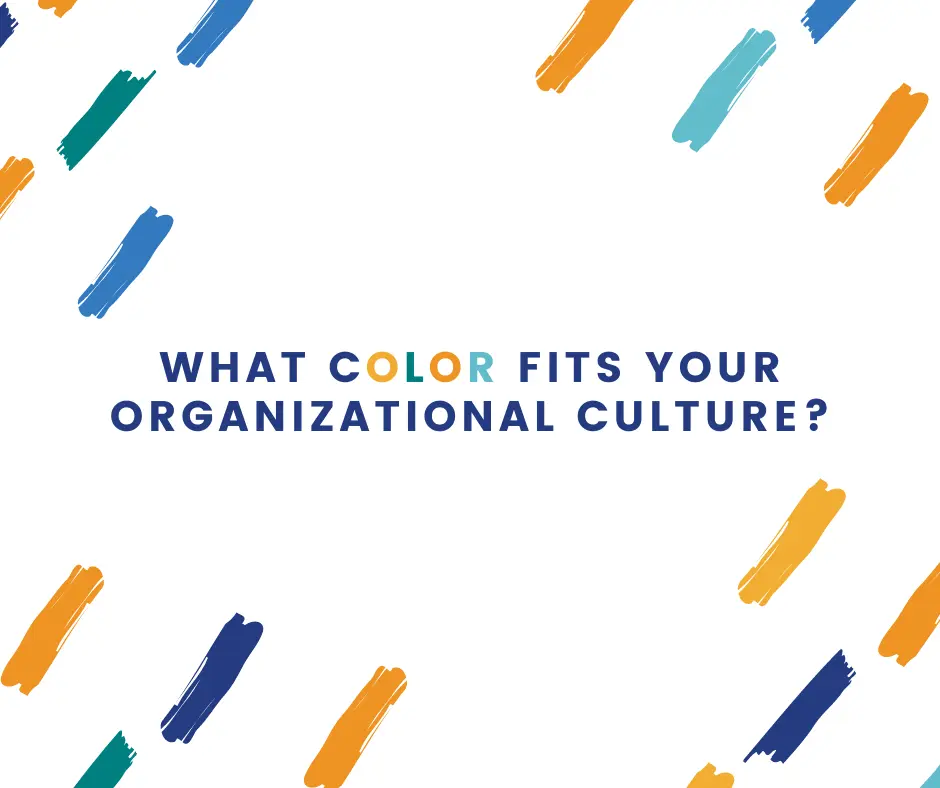What color fits your organizational culture the most?
3 Nov 2021 • 8 min read

Robert Nowak
Head of People

In many years I’ve worked on the HR, and some might say “the soft” side of the business, one of the most important reasons people want to join and/or stay with a company can be simply described as atmosphere. Most people will viscerally understand the term and what it means. And it’s not the layer of gas that envelopes a planet, it's what we call an organizational culture.
Organizational Culture – it’s kind of a big deal
What most people will call atmosphere in the company, in the business sphere, is referred to as Organizational Culture. One of my favorite scholars researching this phenomenon is Edgar Schein. He described 3 levels built on each other that affect how we work together and how we interact within an organization.
He found that it all starts with Basic Underlying Assumptions, which are unseen and not actively defined in everyday interactions, but they are there. Trust me, I’m a Doctor. Built on them are the Exposed Values that include the mission, vision, and code of expected behaviors. These are pretty much visible. And at the top we have Artifacts. They are attributes of the company that can be seen, heard, and even felt. They will be obvious when you are witnessing how people interact with each other, how they treat each other & treat people outside of the organization.
To Teal or not to Teal? That might be the question
An important name in this topic is Frederic Laloux. He has published a groundbreaking book named “Reinventing organizations” that explored the evolution of different methods in which organizations were run. Laloux analyzed 4 historical models and showed 1 new, evolutionary one, of which he’s clearly a wholehearted proponent. He used a color scheme to easily navigate between them and identified their paradigm, attributes, and breakthrough ideas. You might recognize the evolutionary one, which he color-coded as Teal. A completely new way of running a business. A company centered on a higher, evolutionary purpose that is completely self-managed with distributed decision-making principles. It’s a fascinating read, so I do recommend it, and that’s why I won’t go into details and spoil it for you! 😊
SolveQ Organizational Culture Blueprint
At the beginning of 2021 (around SolveQs’ 3 birthday) we were having a lot of existential discussion on how we would like to build the organization in the next couple of years. Having some people in favor of going full Teal, some wanted to stick with a very classical approach (Amber & Orange) with even some voices raised that we need a more direct autocratic one (just like in the Red ones). So the ideas were varied and all over the place.
As a Software House, we knew that any extreme will just not work. We work with a variety of different clients with specific needs. We have a range of tech experts that come from different walks of life. And our business environment is not easy to navigate, and definitely is not black & white. We need a firm fundamental color with some good ideas from others.
Finding a Perfect organizational culture color mix
Finally, we came up with a mix that is probably the perfect fit for SolveQ. As a service-oriented software company, we wanted to build on the Green approach. It meant we want to embrace Agile-LEAN principles and focus on our Clients’ delight and empowering SolveQers in the process. We place culture over strategy and we want to build a workplace based on shared values and engagement. Additionally, we want to take advantage of some of the more traditional approaches. From the Orange style, we employed organizational systems and processes that are based on meritocracy and innovation. We are placing culture above strategy, but we do manage by objectives and construct viable strategies.
The novel way of doing things is also something we want to partake. Even if not fully implemented, we want to have parts of the Teal approach weaved into our culture. Our way of doing just that is embracing a human-centric approach and implementing a Wholeness approach. The aim is for everyone who wants to be part of our community will feel welcomed and can be their true selves. In the future, we want to create a network approach for exploring evolutionary projects that will be self-managed. We are not able to realize it yet, but that’s our goal for the years to come.
You talk the talk, but do you walk the walk?
At SolveQ we do everything, as they say, to put our money where our mouths are. We’ve established 5 core values that relate to everyone in the organization. The start of everything is Trust, as any other one value does not matter without it. Then we are focusing on Fairness in how we interact with each other on a daily basis, but also on building fair partnerships with our clients. SolveQ builds custom software, so we can’t really go without being Innovative. We believe that every voice counts and through Inclusion we are building a human-centric culture of open communication & promoting feedback. Lastly, we feel Responsible, for our individual actions, for our people but also for something greater – the environment that we live in.
All these values translate into how we make company decisions, what employee benefits do we offer, and how we assess successes. Some may look at it and say that we are not doing enough, not being Teal enough, or perhaps that we do too much in other areas. Despite Constantly growing and adjusting our approach along the way, we always keep our culture blueprint in mind. It’s a huge help in determining if doing anything in a certain way makes sense to us as SolveQers. Here is how we've introduced charismatic leadership through humor.
If it doesn’t fit…
Following trends, chasing new ideas, and looking for the best new thing is always worth your while. Analyzing your competition and their moves is crucial in planning how to react. Having an understanding of what is happening and trying to be at least one or two steps ahead is needed to be able to adapt to the ever-changing world.
But…having an understanding doesn’t mean that one has to implement everything without reflection. Someone doing something doesn’t mean you have to do the same. The level of adopting new ideas, processes, or parts of certain methodologies should be aligned with your business model, your culture & your vision of the company.
I would suggest gathering as much data, case studies, inspirations, and knowledge as to determine what will work for you. Johnnie Cochran, a lawyer defending OJ Simpson, famously said “if it doesn’t fit, you must acquit” pointing to a glove worn by the alleged murderer. In a bit gruesome way, it might be similar in implementing any type of culture blueprint in the organization, so I dare to say “if it doesn’t fit, just quit it” 😊
However, if you think that our “SolveQ glove” will fit you perfectly check out our open positions - https://solveq.zohorecruit.eu/jobs/Careers or if you have some questions drop me a line @ robert.nowak@solveq.io
For all my Polish readers, here is my new podcast - check it out!
Share:
Looking for expert development team?
Schedule a call with Tech Consultant

Robert Nowak
Head of People
SolveQs Head of People. An academic, a scholar & a gentleman. A self-described student of humanity & huge fan of cats.